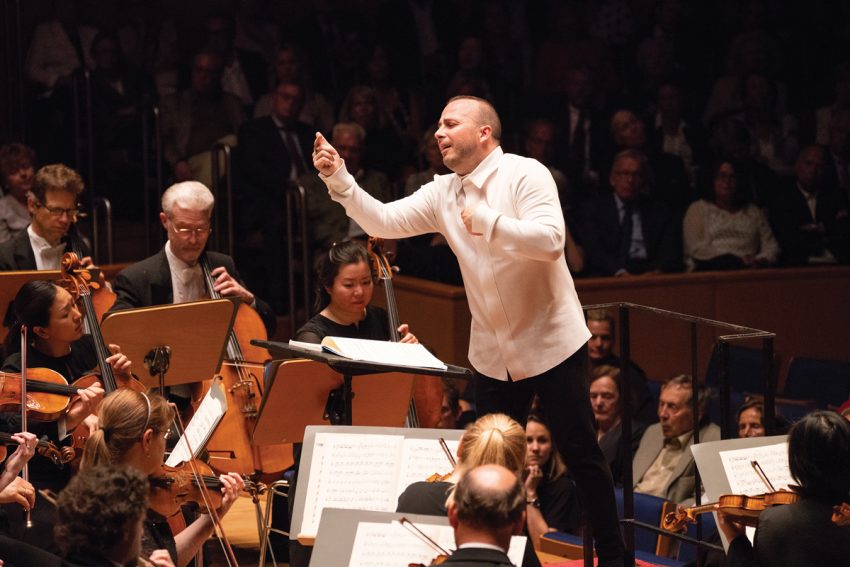
The all-Mozart concerts led by Nézet-Séguin on October 11, 12 and 13 were revealing. Each of the pieces were freshly re-interpreted, with clarity and transparency.
Especially lucid was the Symphony No. 40 in G minor, the next-to-last symphony that Mozart wrote. This is the composition that most embodies the classic genre. When I introduce symphonies to young people, this is the work I choose as the best example of the sonata form — the demonstrator model for prototypical classical compositions.
Yannick’s interpretation was detailed yet un-fussy as he laid out the structure of AABA — a melody, repeated and developed, then followed by a contrasting section before returning to the first tune. The opening is disarmingly simple. a repetition of notes a half-step apart, all within the span of less than an octave. Quickly thereafter, Mozart explores new directions. The development section of the first movement is in the unexpected key of F-sharp, which is a jolt compared to the sorrowful opening key of G minor.
The second movement is a pastorale of sublime serenity, almost like the day-in-the-country that Beethoven would depict in his Sixth Symphony a few years later. Yannick let this movement unfold softly, with irregular descending notes that fell like raindrops onto fields. Conductors normally omit Mozart’s repeated sections in this movement, but Nézet-Séguin opened up almost all of those sections to give us a more expansive view of the musical landscape.
This serenity was broken by the unexpected tumult of Mozart’s last two movements. Rarely have the innovative shocks in those movements been this impressive. And the Philadelphia horn section sounded superb during its crucial interjections in the Menuetto. The unexpected key changes and rhythm changes made special impact because Nézet-Séguin made the preceding sections sound so serene.
Yannick, by the way, continues to evolve in his physical conducting style. Last season, he often put down his baton and shaped orchestral sound with his two hands. This weekend he held the baton in his right hand but rarely utilized it to beat tempi in the traditional way. Instead, he grasped it in the middle as he used both hands equally to mold the orchestra. His hair is shorter and lighter-colored this year, and he looks stylish in a tailored white shirt, untucked, that looks almost like a jacket.
Here, and in Mozart’s “Haffner” Symphony No. 35 in D major and Sinfonia concertante for violin, viola and orchestra, Yannick set tempi that flowed naturally, without distractions. Phrasing was limpid and graceful. The solos in the Sinfonia were nimbly played by associate concertmaster Juliette Kang and first chair violist Choong-Jin Chang.
The size of the orchestra was greatly reduced, to 49 players in the G minor and almost-similar numbers in the other pieces, yielding interpretations that were authentic and definitive.